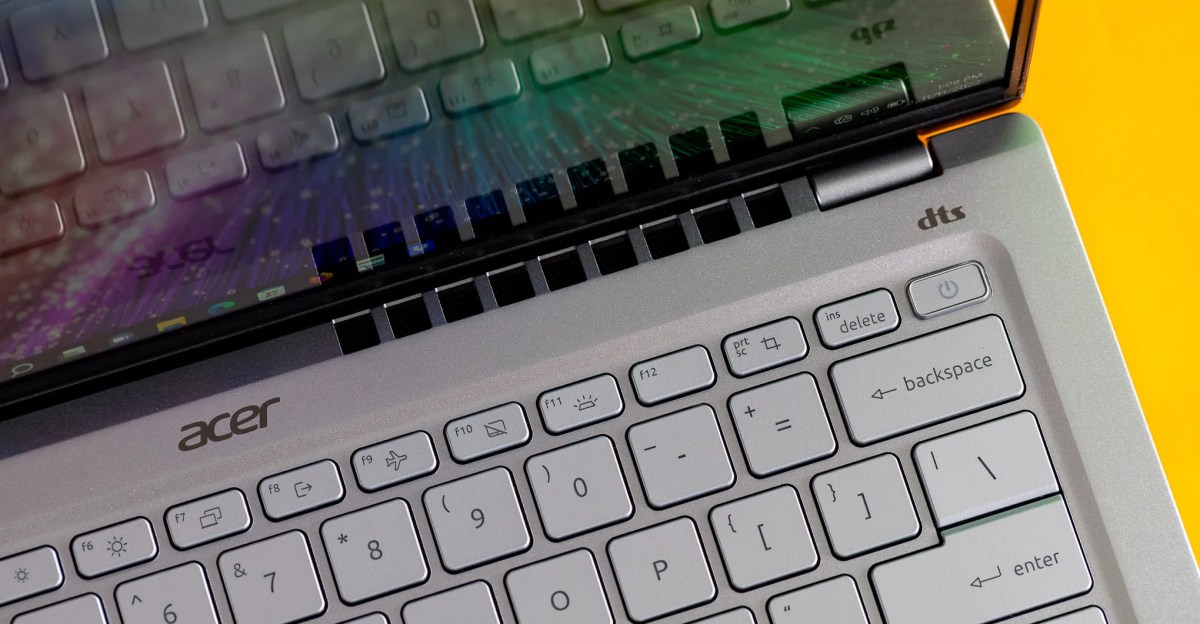Acer’s Bold Move: How Trump’s Policies are Reshaping Laptop Prices
In an unexpected turn of events, Acer, a leading player in the laptop manufacturing arena, has become the first major company to raise prices in reaction to new tariffs and trade policies instituted during Donald Trump’s administration. This strategic decision could potentially set a precedent for the entire tech industry, forcing both consumers and competitors to rethink their approaches in an increasingly complex economic landscape. As Acer navigates these turbulent waters, the implications of their price hike could reverberate throughout the market.
The Context of Price Increases
The decision by Acer to raise laptop prices is rooted in a broader economic context characterized by shifting trade policies and tariffs. Under Trump’s administration, several goods imported from China faced significant tariffs, which directly affected manufacturers relying on Chinese-made components. Laptops, being highly dependent on a global supply chain, are no exception. The imposition of these tariffs meant that companies like Acer had to either absorb the increased costs or pass them on to consumers.
Many technology companies opted to absorb some costs to maintain competitiveness, but Acer’s decision to increase prices indicates a shift in strategy. By doing so, Acer is not only responding to immediate economic pressures but is also sending a signal to the market regarding the sustainability of current pricing models amidst changing economic conditions.
Understanding the Tariffs and Their Impact
The tariffs introduced by the Trump administration were part of a broader strategy aimed at reducing the trade deficit with China and encouraging domestic manufacturing. However, the unintended consequences for consumers and tech companies have been significant:
- Increased Costs: Tariffs on components have led to increased manufacturing costs. For laptop manufacturers, this means that the price of essential parts such as processors, memory, and displays has risen, directly impacting the final product price.
- Market Uncertainty: Trade policies have created a climate of uncertainty, making it difficult for manufacturers to plan long-term strategies. Companies are now grappling with fluctuating prices and supply chain disruptions.
- Consumer Price Sensitivity: Consumers have become increasingly price-sensitive in the current economic climate. As laptop prices rise, companies must carefully consider their pricing strategies to avoid losing market share.
Acer’s Strategic Gamble
Acer’s decision to raise laptop prices can be viewed as a strategic gamble. By increasing prices, Acer is betting on the brand’s strength and reputation to retain customer loyalty despite higher costs. The company likely conducted extensive market research before making this move, weighing the potential backlash from consumers against the necessity of maintaining profit margins.
Moreover, Acer’s price hike could be interpreted as a rallying cry for other manufacturers to follow suit. If Acer successfully navigates this transition without losing significant market share, it may encourage competitors to adopt similar strategies. This could lead to a significant restructuring of pricing across the tech industry.
The Broader Tech Industry Response
The ripple effects of Acer’s policy change could prompt other manufacturers to reconsider their pricing strategies. Companies like Dell, HP, and Lenovo may find themselves at a crossroads. They face the choice between:
- Absorbing Costs: Some manufacturers might choose to absorb the increased costs in an effort to maintain competitive pricing.
- Raising Prices: Others may follow Acer’s lead, opting to pass on the costs to consumers, potentially resulting in a new standard for laptop pricing.
As companies weigh these options, they must also consider consumer behavior. If Acer’s price increase leads to a significant drop in sales, it could deter competitors from following suit. Conversely, if Acer maintains strong sales figures despite the price hike, it could embolden others to make similar adjustments.
Consumer Reactions and Market Dynamics
Consumer reactions to Acer’s decision will play a critical role in shaping the future of laptop pricing. Some consumers may be willing to pay a premium for Acer’s products, especially if they perceive added value in terms of quality, features, or brand loyalty. However, others may turn to alternative brands or models that offer better affordability.
Market dynamics are likely to shift as consumers reassess their purchasing strategies. The rise in laptop prices could lead to:
- Increased Demand for Budget Options: As prices rise, budget-conscious consumers may seek more affordable alternatives, leading to increased demand for lower-priced models.
- Focus on Value: Consumers may prioritize value over brand loyalty, opting for products that offer the best features for the price.
The Future of Laptop Pricing
As the tech industry adjusts to these changes, several factors will influence the future of laptop pricing:
- Global Supply Chain Stability: The stability of global supply chains will play a crucial role in determining the prices of laptops. Any disruptions could lead to further price increases or shortages.
- Continued Trade Policies: The direction of future trade policies will also significantly impact the cost of components and, subsequently, the final price of laptops.
- Consumer Preferences: As consumer preferences evolve, manufacturers will need to adapt their product offerings and pricing strategies accordingly.
Conclusion
Acer’s bold move to raise laptop prices in response to Trump’s policies could signify a pivotal moment in the tech industry. By taking this step, Acer is not only addressing immediate economic challenges but also potentially reshaping market dynamics for the foreseeable future. As other manufacturers assess their strategies and consumers adjust their purchasing decisions, the landscape of laptop pricing will likely continue to evolve. Whether this leads to a new normal in pricing or a swift return to previous models remains to be seen, but one thing is clear: the impact of these policies will be felt across the industry.
See more Future Tech Daily

